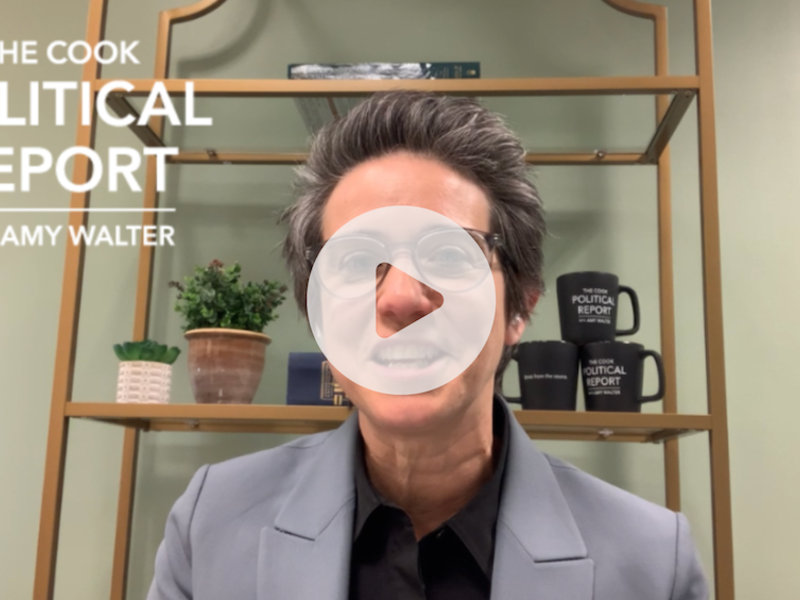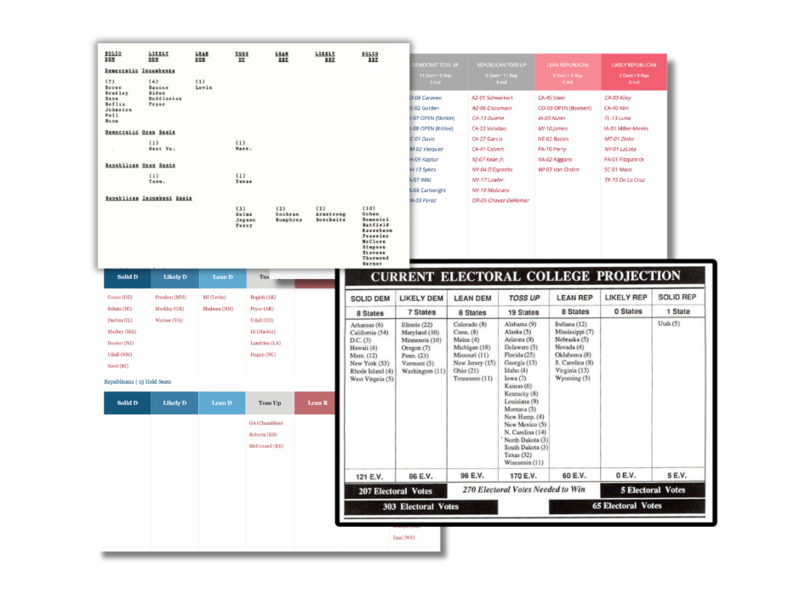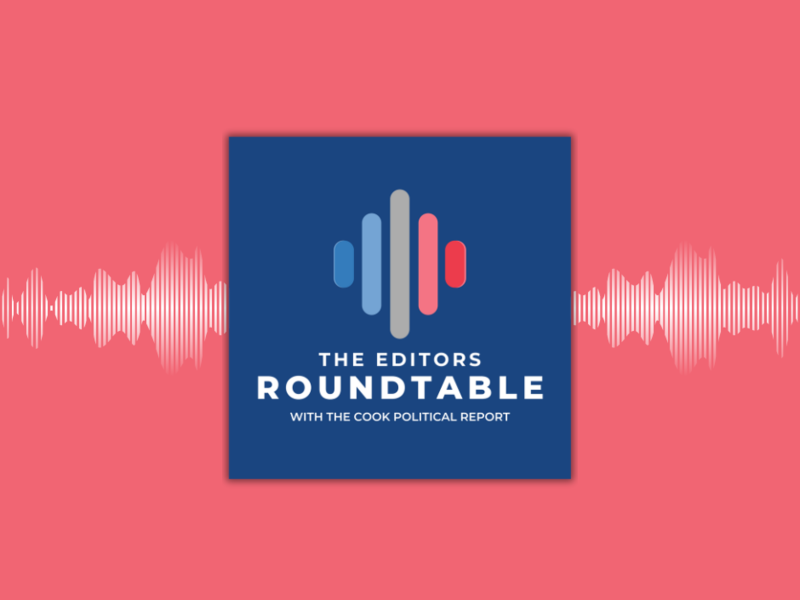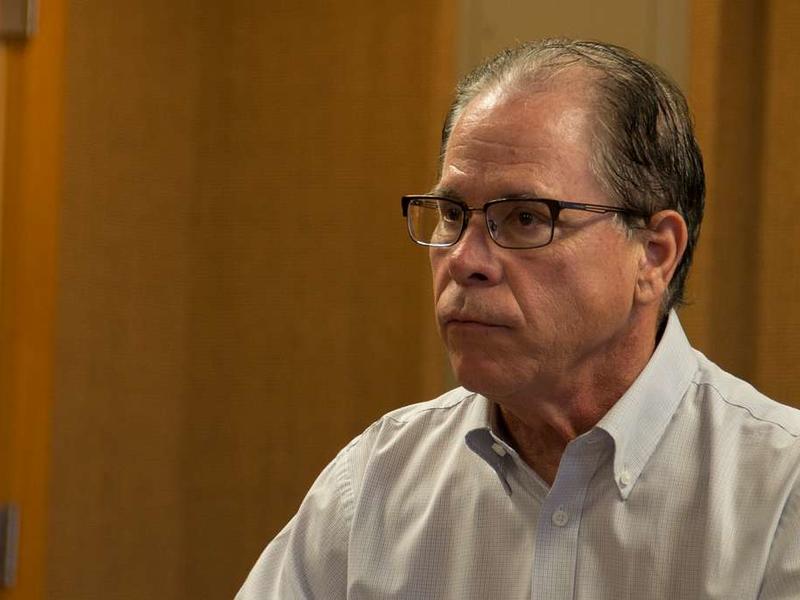
There is an idiom about “whistling past the graveyard”—that is, dismissing the potentially dire circumstances at hand. Congressional Democrats are doing just that, with majorities so narrow as to be almost invisible to the naked eye. With a 5-seat edge in the House and a 50-50 tie in the Senate, Democrats are ignoring the economic risk of enacting the spending package that President Biden will be proposing in his address to Congress Wednesday night, and what the scale of his proposal could mean in the midterms.
Biden is in jeopardy of becoming the fifth consecutive president to lose both House and Senate majorities, either in a single midterm election like Bill Clinton (1994) and George W. Bush (2006), or over the course of the presidency like Barack Obama (2010 and 2014) and Donald Trump (2018 and 2020). The biggest difference is that Biden and Democrats have smaller margins today than any of his four predecessors did when they lost those majorities.
With such narrow majorities, there are many dangers, and one, no doubt, is the economy—even if it’s not the anemic growth that plagued Obama in his first term, which Democrats are taking great effort to avoid. Rather, the opposite scenario poses a threat: an economy overheating with too much stimulus applied too quickly, resulting in a resumption of serious inflation for the first time in decades. How much gasoline can be safely poured on a fire that is already building in intensity?
For the sake of argument, let’s say that the individual elements in Biden’s package are hardly crazy or revolutionary, that most make complete sense. Granted all of these stipulations probably drive conservatives nuts and seem obvious to liberals, but stay with me here.
Let’s first stipulate that, in retrospect, Obama’s 2009 American Recovery and Reinvestment Act stimulus package turned out to be insufficient in size. The magnitude of the economic hit from the 2008 financial crisis was greater than fully appreciated, and/or in order to attract Republican congressional support Democrats agreed to a watered-down package that prevented the economy from bouncing back as robustly as desired. The time spent and compromises made to try to get GOP support accomplished little, as no House Republicans and only three GOP senators ended up voting for the stimulus package. The sluggish recovery kept Obama’s reelection in doubt for a longer time than most today appreciate, the public underwhelmed by his efforts to pull the economy out of the ditch.
Second, let’s stipulate that traditional infrastructure needs have been woefully underfunded at least over the last 30 years, though some say 50 years—that streets, roads, bridges, tunnels, railroads, mass-transit systems, water, and sewer lines all need an enormous investment to get them back to where they should be, because of money not spent in decades past. It is also worth noting that the kinds of blue-collar jobs created by such construction—jobs that were once filled directly or indirectly by manufacturing—are badly needed in this post-industrial age. The long post-World War II economic boom was largely driven by manufacturing, but now we have entered what is variously called an information, knowledge, or technology economy.
Let’s also note that more technology-oriented infrastructure has become necessary—not just the concrete, bricks-and-mortar variety, but also updating and securing the nation’s electrical grid and expanding high-speed broadband access, particularly in rural and small-town America as well as inner cities. If for no other reason, kids growing up in those areas are at risk of falling even further behind in terms of qualifying for the jobs of the future. Then, there is climate-change-related infrastructure, both renewables such as solar and wind energy and retrofitting buildings to make them more energy-efficient.
And let’s be even more enlightened and accept the concept of human-needs infrastructure like childcare, elder care, and home health care, which have important economic implications as people who would otherwise be working full-time jobs need to stay home to care for loved ones.
Very hopeful signs of growth are emerging, but the economy still lacks solid footing because the pandemic is not yet under control. The United States is not close to reaching herd immunity, the critical-mass level of vaccination needed. New strains of the disease are eroding the effectiveness for those who have been vaccinated, and lack of resources or political philosophies are preventing many others from getting vaccinated.
Let’s accept all of this.
After stimulus packages enacted by the last Congress and signed into law by President Trump, combined with Biden’s American Rescue Plan signed into law last month, an economy that saw real gross domestic product decline by 5 and 31.4 percent, respectively, in the first and second quarters of 2020, then grew by 33.4 and 4.3 percent in the third and fourth. The Blue Chip Economic Indicators survey conducted earlier this month projected that, in the first quarter of 2021, real GDP grew by 5.4 percent and will grow in the current quarter by 8.7 percent, a blistering pace by any standard, with 6.3 percent for this calendar year and 4.3 percent for next.
What was put into place last year and so far this year to pull the economy out of the ditch, combined with what has been proposed, according to an analysis by Deutsche Bank Research’s macro strategist Alan Ruskin, by some indices results in over double the 2020 inflation-adjusted dollars of Franklin Roosevelt’s New Deal and Obama’s Recovery Act, and more than the Roosevelt and Obama packages spent in 2020 dollars in per-capita cost as well. Of course, there are a lot of ways to make comparisons, and this was just one, but the magnitude of what has occurred and is proposed to occur is so great that few really understand the scale being contemplated.
The danger of overheating the economy, or triggering a serious spike in inflation for the first time in decades, is real, with economist and former Treasury Secretary Larry Summers, a Democrat by any standard, leading the chorus of those concerned. In a Council on Foreign Relations virtual conversation last week, Summers compared the situation to that of the 1960s, when the United States was trying to create a Great Society and fight the Vietnam War simultaneously, triggering horrible levels of inflation. There are already signs in some sectors of labor shortages and price increases before the massive package has even been voted on, let alone money spent. This river of spending is both wide and deep, a volume that may be far disproportionate to the gap in output between where the economy would likely have been without the pandemic and economic plunge, and where we have been and are today.
It is not the specifics that are concerning but the scale. Does it make sense to go to a restaurant that has an extensive menu, including many healthy dishes, and order everything on the menu just because the last time you dined there you left hungry? While so much of what is in the package that President Biden will be selling Wednesday night makes all of the sense in the world, does doing all of it now make sense?
As the proverb goes, the road to hell is paved with good intentions. So much in Biden’s proposal is badly needed, but doing it all on this scale could have economic and political consequences that Democrats will long regret.
This article was originally published in the National Journal on April 27, 2021.










Subscribe Today
Our subscribers have first access to individual race pages for each House, Senate and Governors race, which will include race ratings (each race is rated on a seven-point scale) and a narrative analysis pertaining to that race.